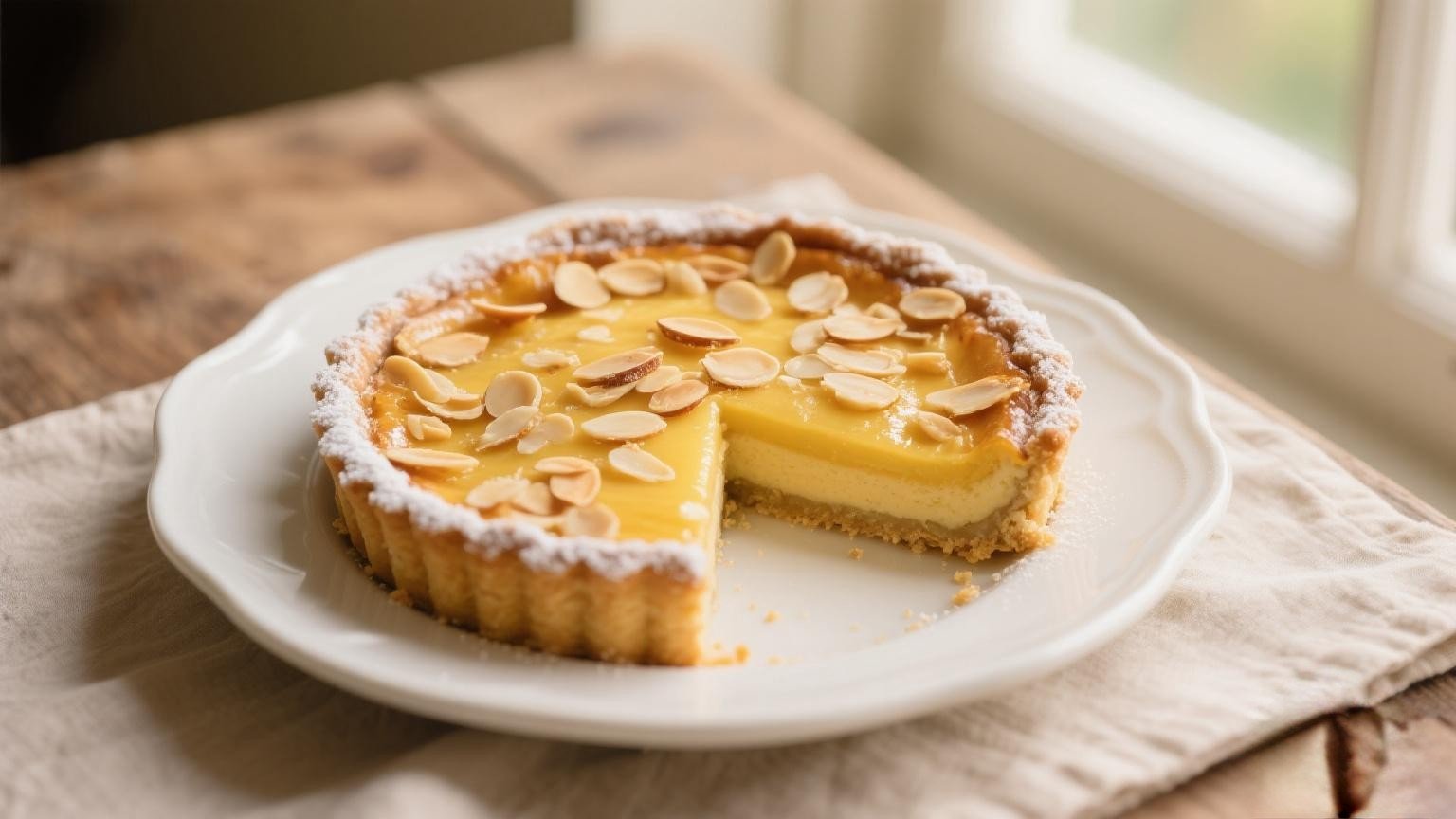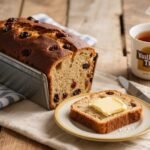There is a certain magic to a Mary Berry recipe. It is the magic of reliability, of perfect flavour, and of homely comfort that has made her the nation’s favourite baker for over four decades. As the much-loved judge on The Great British Bake Off, Mary taught us that baking is not about the fussiest decoration, but about heart, technique, and quality ingredients. Among her vast collection of over 70 cookbooks, her frangipane tart recipe stands out as a true classic. This dessert, with its crisp, buttery pastry and luxuriously soft, almond-rich filling, is the epitome of elegant simplicity. It is a taste of tradition, perfected by a master.
In this guide, we will explore Mary’s unique approach, delve into the fascinating history of frangipane, and provide you with a fail-safe recipe, complete with troubleshooting tips, a vegan adaptation, and everything you need to create this masterpiece at home.
II. Mary Berry’s Touch & The Rich History of Frangipane
Mary Berry’s culinary philosophy, honed at Le Cordon Bleu in Paris, is built on a foundation of impeccable technique and the use of high-quality, reliable ingredients. She favours real butter, fresh free-range eggs, and good-quality vanilla extract. Her frangipane recipe is no exception; it is straightforward, without unnecessary complexity, allowing the pure, comforting flavours of almond and pastry to shine.
The history of frangipane is a journey across Europe. Its name is believed to derive from the 16th-century Italian nobleman, Marquis Muzio Frangipani, who created a popular almond-scented perfume for gloves. French pastry chefs, inspired by this scent, developed a creamy almond custard and gave it his name.
The tart itself has deep roots in British and French baking. The English Bakewell Tart is a close cousin, though it traditionally includes a layer of jam beneath the frangipane. Mary Berry’s version stays true to the essence of the French tarte frangipane: a crisp, sweet shortcrust pastry (pâte sucrée) filled with a simple, elegant almond cream. Her personal touch lies in the recipe’s flawless balance and reliability—every element is designed to work perfectly together, creating a tart that is both humble and utterly sophisticated.
III. Your Kitchen Notes: Ingredients & Equipment
Using the best ingredients you can find is the first step to a magnificent tart, just as Mary Berry would advise.
Ingredients:
- For the Sweet Shortcrust Pastry:
- 175g (1 ¼ cups) plain flour, plus extra for dusting
- 75g (⅓ cup) cold unsalted butter, cubed
- 2 tbsp caster sugar
- 1 large free-range egg yolk
- 2-3 tbsp cold water
- For the Frangipane Filling:
- 125g (½ cup + 1 tbsp) soft unsalted butter
- 125g (⅔ cup) caster sugar
- 2 large free-range eggs, lightly beaten
- 125g (1 ¼ cups) ground almonds
- 1 tsp almond extract
- 1 tsp vanilla extract
- 25g (¼ cup) plain flour
- To finish: A handful of flaked almonds & icing sugar for dusting
Essential Equipment:
- 23cm loose-bottomed fluted tart tin
- Mixing bowls
- Plastic wrap
- Rolling pin
- Baking beans (or uncooked rice/pulses)
- Electric hand whisk or stand mixer
- Wire cooling rack
IV. Step-by-Step Recipe Instructions
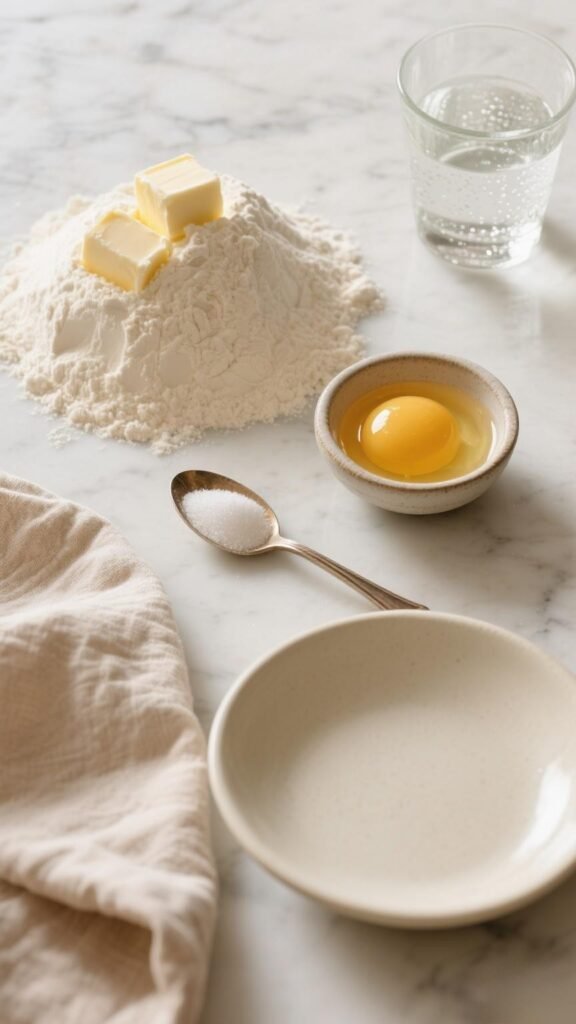
Step 1: Make the Pastry
Place the 175g flour and 75g cubed butter into a large bowl. After this, Rub the butter into the flour with your fingertips until the mixture resembles fine breadcrumbs. Stir in the 2 tablespoons of sugar. Add the egg yolk and 2 tablespoons of cold water. Mix with a knife until the dough begins to clump together. If it seems dry, add the extra water. Bring the dough together into a ball with your hands, wrap in plastic wrap, and chill for at least 30 minutes.
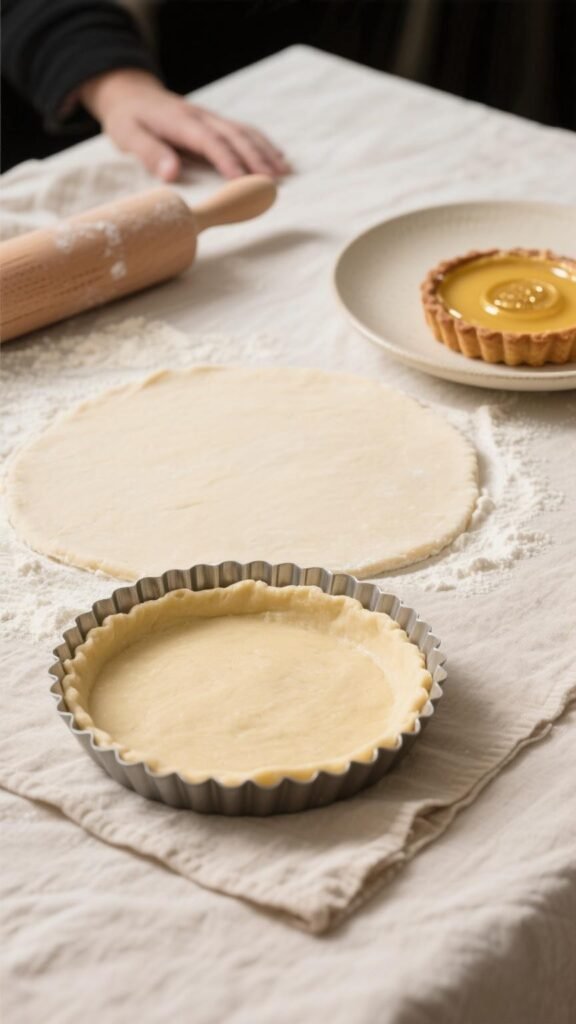
Step 2: Line the Tin
Preheat your oven to 200°C/180°C Fan/400°F/Gas 6. Lightly flour your work surface. Roll out the chilled pastry until it is large enough to line your tart tin. Roll the pastry over your rolling pin and carefully lift it over the tin. Gently press the pastry into the fluted sides. After this, Roll the rolling pin over the top to trim off any excess. Prick the base all over with a fork.
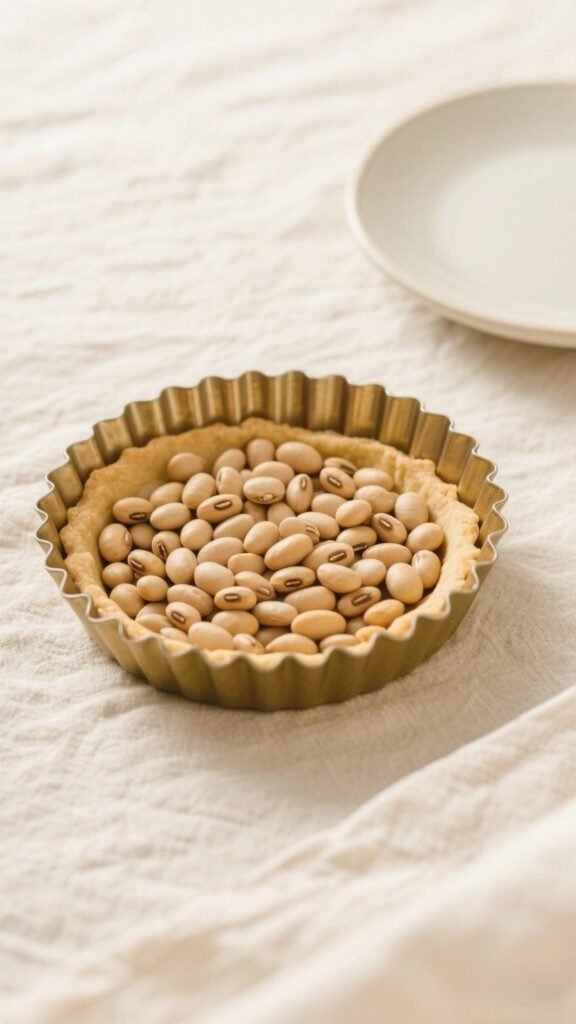
Step 3: Blind Bake
After this, Line the pastry case with baking parchment and fill it with baking beans. Bake in the preheated oven for 15 minutes. Carefully remove the parchment and beans, then return the empty case to the oven for another 5-7 minutes until it is pale golden and dry to the touch. Set aside to cool slightly. Reduce the oven temperature to 180°C/160°C Fan/350°F/Gas 4.
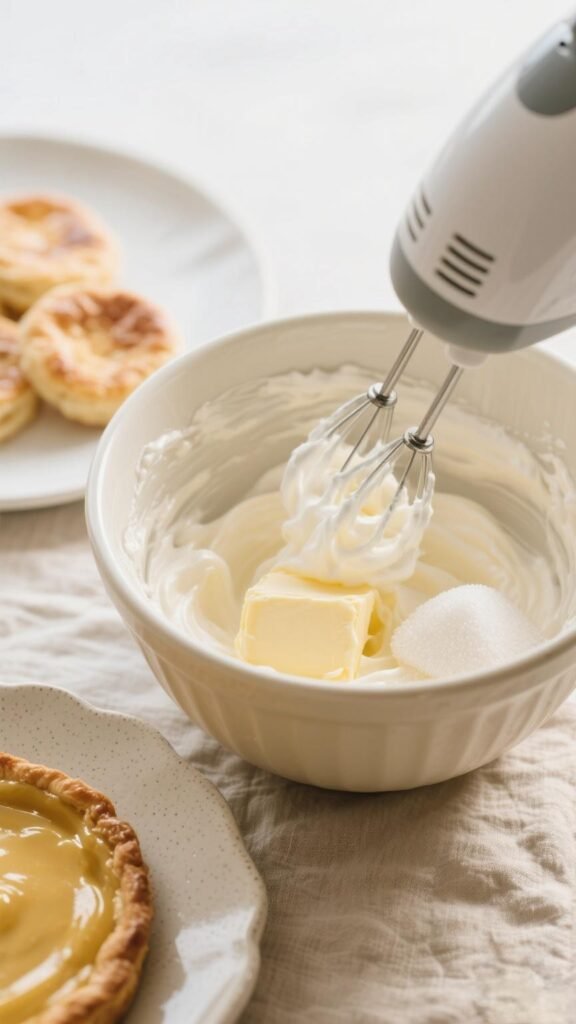
Step 4: Create the Frangipane
In a large bowl, beat the 125g of soft butter and 125g of caster sugar together until the mixture is very pale, light, and fluffy. This will take about approximately 3-4 minutes with an electric mixer.
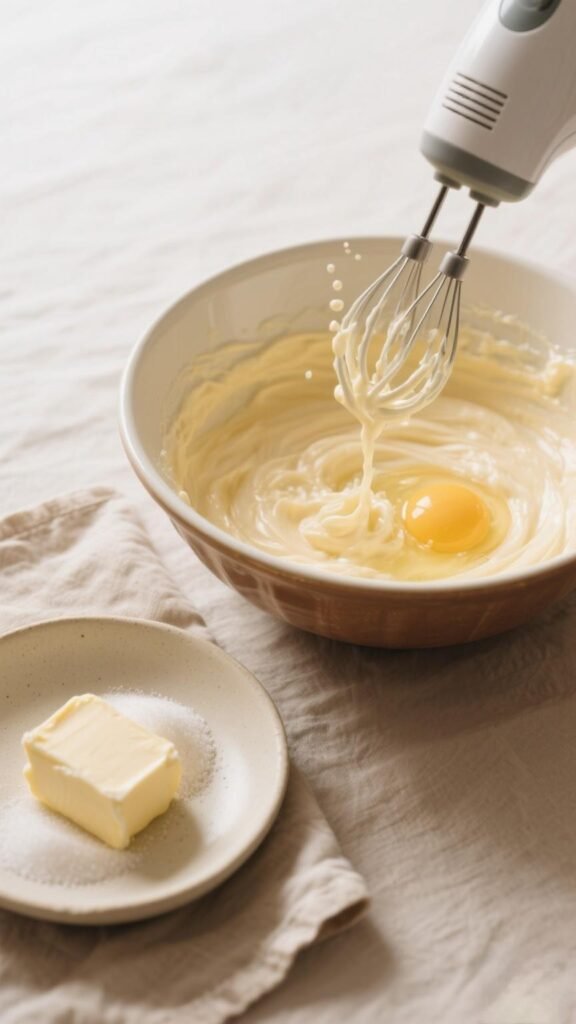
Step 5: Add the Eggs
Gradually add the lightly beaten eggs, a little at a time, beating well after each addition. If the mixture looks like it might curdle, add a spoonful of your measured ground almonds to help stabilise it.
Step 6: Finish the Mix
Fold in the 125g of ground almonds, 1 teaspoon of almond extract, 1 teaspoon of vanilla extract, and the 25g of plain flour until everything is just combined. Be careful not to overmix.

Step 7: Fill and Bake
After this, Spread the frangipane filling evenly into the cooled pastry case. Scatter over a handful of flaked almonds. Bake in the lowered oven for 25-35 minutes, or until the filling is firm to the touch and a deep golden brown.
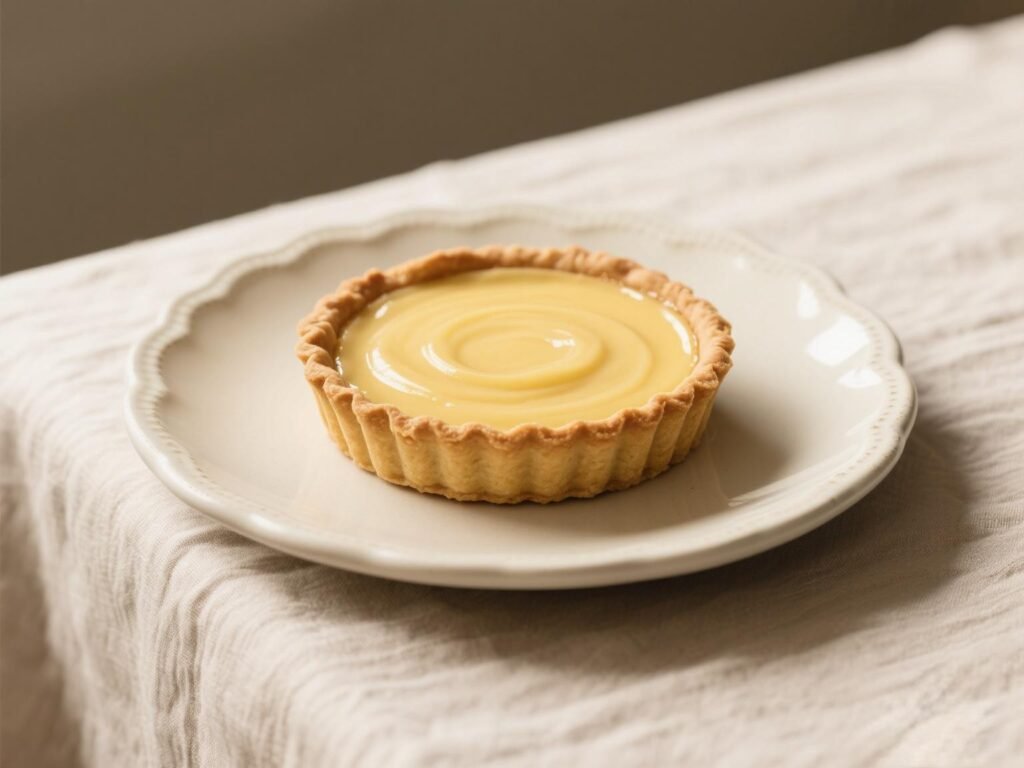
Step 8: Cool and Serve
Allow the tart to cool completely in the tin before carefully removing it. Just before serving, dust generously with icing sugar through a fine sieve.
V. Flavor Profile & Nutritional Information
This tart is a masterpiece of texture and taste. The pastry is crisp, short, and slightly sweet, providing the perfect vessel for the rich, moist filling. The frangipane is densely soft and nutty, with the deep, warm flavours of almond and vanilla shining through. The flaked almonds on top add a delightful crunch, while the final dusting of icing sugar brings a gentle sweetness.
Nutritional Breakdown (Per serving, based on 8 servings):
Please note this is an estimate calculated using online nutritional tools.
- Calories: ~485 kcal
- Fat: 32g
- Saturated Fat: 14g
- Carbohydrates: 42g
- Sugars: 25g
- Protein: 8g
- Fibre: 2g
VI. Tips for a Perfect Frangipane Tart
- Why is my pastry soggy? Ensure you prick the base well before blind baking and that you bake it until it is completely dry and pale golden before adding the filling. A soggy bottom is almost always due to under-baking the case.
- Why did my filling sink? Make sure you cream the butter and sugar for long enough—it should be very pale and fluffy. This incorporates air, which helps the filling rise. Also, avoid opening the oven door during the first approximately 20 minutes of baking.
- Enhancing Flavour: For an extra flavour boost, you can add the zest of half a lemon or a tablespoon of dark rum to the frangipane mixture.
- Variation: Berry Frangipane. Before adding the frangipane, scatter 100g of fresh raspberries or blueberries over the base of the cooked pastry case. Pour the filling over the top and bake as normal. The berries will create a juicy, fruity layer.
VII. Vegan Adaptation
You can enjoy a delicious vegan version of this classic tart with a few simple swaps.
Vegan Ingredients:
- Pastry: Substitute the butter for a hard, plant-based block (like Stork baking block or Naturli Vegan Block). Replace the egg yolk with 1 tbsp of cold water.
- Filling: Use 125g vegan butter. Replace the eggs with 100ml of aquafaba (the liquid from a can of chickpeas). Whip it lightly with a fork before adding. Ensure your sugar is vegan-friendly (most are).
Method:
- Make the pastry as in Step 1, using the vegan swaps. Chill and blind bake as directed.
- For the filling, cream the vegan butter and sugar as normal.
- Very gradually beat in the aquafaba, a tablespoon at a time, just as you would with eggs.
- Fold in the ground almonds, vegan flour, and extracts. Add ½ tsp of baking powder to help it rise as vegan versions can be denser.
- Bake at the same temperature for 25-30 minutes. It may need less time, so check that it is springy to the touch.
VIII. Recipe Variations & Serving Suggestions
- Chocolate Frangipane: Replace 25g of the ground almonds with 25g of cocoa powder for a chocolate version.
- Pear & Almond Tart: Arrange thinly sliced, poached or tinned pear halves on the base of the pastry case before adding the frangipane.
- How to Serve: This tart is sublime served slightly warm with a dollop of cold clotted cream, crème fraîche, or a simple pouring custard. It is also perfect with a cup of tea at room temperature.
IX. Storage & Reheating Instructions
- Storage: Keep the tart in an airtight container at room temperature for up to 3 days.
- Freezing: This tart freezes beautifully. Freeze it whole or in slices. Wrap it tightly in cling film and foil. It will keep for up to 3 months. Defrost at room temperature for a few hours.
- Reheating: To revive the pastry, place a slice in a moderate oven for 5-8 minutes until warm.
X. Frequently Asked Questions (FAQ)
Q: Can I use ready-made pastry?
A: Yes, absolutely. A block of ready-made shortcrust pastry is a great time-saver. Just roll it out and blind bake as described.
Q: My frangipane is browning too quickly!
A: If the top is getting too dark before the centre is cooked, loosely place a sheet of aluminium foil over the top for the remainder of the baking time.
Q: What’s the difference between frangipane and marzipan?
A: They are very different! Marzipan is a sweet, pliable paste made from almonds, sugar, and egg whites, used for covering cakes. Frangipane is a soft, custard-like filling used inside pastries.
Q: Can I use almond flour?
A: Yes, ground almonds and almond flour are essentially the same thing in the UK and can be used interchangeably for this recipe.
XI. Conclusion & Call to Action
Mary Berry’s Frangipane Tart is more than just a recipe; it is a lesson in creating something truly wonderful from a handful of simple, good ingredients. Its timeless appeal lies in its perfect contrast of textures and its rich, satisfying flavour.
XII. Additional Resources
- Explore Mary Berry’s official website and incredible collection of cookbooks: Mary Berry’s Cookbooks
- For more on the history of baking, a great resource is the Great British Chefs website.
- See more healthy recipes



